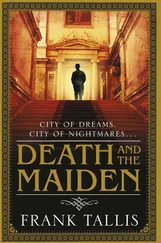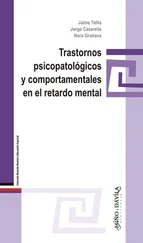Frank Tallis - Deadly Communion
Здесь есть возможность читать онлайн «Frank Tallis - Deadly Communion» весь текст электронной книги совершенно бесплатно (целиком полную версию без сокращений). В некоторых случаях можно слушать аудио, скачать через торрент в формате fb2 и присутствует краткое содержание. Жанр: Исторический детектив, на английском языке. Описание произведения, (предисловие) а так же отзывы посетителей доступны на портале библиотеки ЛибКат.
- Название:Deadly Communion
- Автор:
- Жанр:
- Год:неизвестен
- ISBN:нет данных
- Рейтинг книги:3 / 5. Голосов: 1
-
Избранное:Добавить в избранное
- Отзывы:
-
Ваша оценка:
- 60
- 1
- 2
- 3
- 4
- 5
Deadly Communion: краткое содержание, описание и аннотация
Предлагаем к чтению аннотацию, описание, краткое содержание или предисловие (зависит от того, что написал сам автор книги «Deadly Communion»). Если вы не нашли необходимую информацию о книге — напишите в комментариях, мы постараемся отыскать её.
Deadly Communion — читать онлайн бесплатно полную книгу (весь текст) целиком
Ниже представлен текст книги, разбитый по страницам. Система сохранения места последней прочитанной страницы, позволяет с удобством читать онлайн бесплатно книгу «Deadly Communion», без необходимости каждый раз заново искать на чём Вы остановились. Поставьте закладку, и сможете в любой момент перейти на страницу, на которой закончили чтение.
Интервал:
Закладка:
As soon as he had struck the knocker, a dog started barking. He heard the sound of a woman’s voice: ‘Quiet. Be quiet, Prinz.’
The door was opened by a middle-aged woman who was accompanied by a lively Dobermann pinscher.
‘Yes?’
‘Forgive me for disturbing you. I am a doctor and need to speak with Herr Kolinsky, who I believe lives next door. He is not at home. Do you have any idea when he will be back?’
‘I haven’t seen him or his wife for weeks. I think they must have gone away.’
‘Do you know them?’
‘Not really. He’s not very friendly … and her: she has a very high opinion of herself.’ Liebermann nodded sympathetically. The woman was encouraged: ‘I’m glad they’re away. They make a lot of noise — arguments — and it upsets the dog.’ She extended her hand and stroked the pinscher’s head. ‘Good boy, Prinz.’ The dog licked her fingers.
‘They have a lodger — is that right?’
‘Yes. Herr Erstweiler. A very pleasant gentleman.’
‘You are acquainted with him?’
‘Well, I wouldn’t say that. We met a few times when I was walking Prinz. I haven’t seen him recently, either. He may have found somewhere else to live. It wouldn’t surprise me. They can’t expect to keep lodgers if they’re going to carry on like they do.’
Liebermann smiled.
‘Thank you for you assistance.’
‘Shall I tell them that you called — if I see them?’
‘Yes. If you see them.’
‘And your name is?’
‘Herr Doctor Liebermann.’
The woman nodded and closed the door. The dog started barking again.
Liebermann gazed at the street lamp on the other side of the road.
His conversation with Freud came back to him. It was possible for material offensive to the ego to be projected outwards onto something foreign. But such material could not be completely disowned.
The object into which this undesirable material is incorporated might take the form of another self …
But what was the nature of that undesirable material?
Liebermann knew the answer. Herr Erstweiler’s dream of the English fairy tale had been so very revealing.
39
Amelia Lydgate had made an informal arrangement with Professor Mathias, the terms of which were dictated by Mathias’s neurotic illness and satisfied by the peculiarity of Amelia’s character. In return for tidying his instruments Professor Mathias was happy for Amelia to sit in the morgue and observe him at work. It was an arrangement that had been negotiated, for the most part, without the use of language. The Englishwoman and the old professor enjoyed a curious and unexpected rapport. Indeed, the understanding that they had reached could not have been achieved using words alone, with their hard edges and explicit meanings. The indelicacy of such a conversation would have required Professor Mathias to admit the severity of his condition, which was something he was not prepared to do.
When she entered the morgue Amelia found the professor sitting on a stool, contemplating the body of a young woman: too young, she thought immediately, to have died naturally.
‘Another victim?’ she asked.
The professor nodded and without taking his gaze from the corpse, said: ‘Cacilie Roster. A singer. Inspector Rheinhardt found her this morning in the gardens of the Belvedere palace. This …’ he picked up a retort containing a metal object ‘… had been inserted into her brain.’
‘Another hatpin?’
‘Yes. Although of a different design to those used by the perpetrator to kill Adele Zeiler and Bathild Babel.’
Amelia took off her coat, hung it up, and crossed the floor. The woman’s body was covered with sheets but her head was still exposed. It was as if she was in bed, sleeping. The woman possessed an attractive face with well-proportioned features and a mane of yellow curls.
‘When will it end?’ said Amelia pitifully.
The professor sighed and presented her with a few sheets of paper. ‘Here is my report. Read it if you are interested.’
Amelia sat down next to the professor and studied his findings. When she had finished, she discreetly rearranged the instruments on his trolley before positioning herself at the head of the autopsy table. Mathias joined her and lifted the dead woman’s chin with a crooked finger.
‘I liked that gay young wench, Her two cheeks so red, Her mouth and her handsome brow, Her hair, so blonde and curly …’
‘A poem?’
‘“Early Love” — by Ludwig Heinrich Christoph Holty.’
‘I am afraid, Herr professor, I am not familiar with his work.’
‘He was the most gifted lyric poet of the Gottingen circle. You are English. I would not expect you to be conversant with our great poets.’ Overcome with sentiment, the professor took a comb from his pocket and began to run it through the dead woman’s hair. ‘Holty also wrote a rather lovely “Dirge to the Moon”. The last verse is very affecting: Soon, dearest friend, Oh, soon will beam, Your silvery sheen, Over the tombstone mine …’
If Amelia was impressed by the lyric genius of Holty, she did not show it.
Mathias finished styling the dead woman’s curls but before returning the comb to his pocket he noticed that a few strands had become caught in its teeth. He began to pick them out. The routine ease of his movements came to a halt when he discovered a darker hair. He held it beneath the electric light.
‘Black,’ he said, flatly.
The professor and the Englishwoman looked at each other.
‘Someone else’s?’
Mathias pulled the extremities of the black hair to make it taut. Then, turning to Amelia, he made her party to his thinking by means of an impromptu lecture: ‘The shaft of a hair is covered with a close-set layer of transparent scales — the cuticle — and beneath these are the differentiated cells of the cortex and medulla. The structure of a hair shaft resembles that of a pencil. The paint or varnish corresponds with the cuticle, the wood of the pencil corresponds with the cortex, and the central column of lead corresponds with the medulla. Hair pigment, which gives the hair its colour, is distributed through the medulla and cortex.’ The professor paused and his eyes appeared to expand behind the thick lenses of his spectacles. ‘A head of hair is not always uniform with respect to colour. Take your own, for example. It is quite clearly comprised of many shades of red.’
‘But a black hair among blonde?’
‘It happens’
‘Are there tests to determine whether two different-coloured hairs belong to the same person?’
‘Indeed there are. Two hairs from the same head might be different in colour, but they will show marked morphological similarities — for example, breadth, scale pattern, or shape of tip. Further, one can observe the contours of transverse sections, together with the character and proportions of the various layers.’
‘How very interesting.’
Professor Mathias touched the black hair very gently, bending the shaft. He then did the same with a blonde hair.
‘The black hair is more bristly than the blonde.’ His expression showed that he considered that black hair’s resistance a promising indication. ‘Miss Lydgate. Your eyesight is superior to mine.’ He tapped the lenses of his spectacles emphatically. ‘Would you set up the microscope and prepare two slides: black and blonde.’
Mathias passed her the black hair and one of the blonde hairs which she took with great, almost exaggerated, care.
Amelia did as she was instructed and switched on an electric lamp. She bent over the eyepiece of the microscope and rotated the turret until she had found an appropriate objective.
‘Let us begin with breadth,’ said Professor Mathias. ‘What do you see?’
Читать дальшеИнтервал:
Закладка:
Похожие книги на «Deadly Communion»
Представляем Вашему вниманию похожие книги на «Deadly Communion» списком для выбора. Мы отобрали схожую по названию и смыслу литературу в надежде предоставить читателям больше вариантов отыскать новые, интересные, ещё непрочитанные произведения.
Обсуждение, отзывы о книге «Deadly Communion» и просто собственные мнения читателей. Оставьте ваши комментарии, напишите, что Вы думаете о произведении, его смысле или главных героях. Укажите что конкретно понравилось, а что нет, и почему Вы так считаете.












